Real Time Insights and Predictions on Inbound Call Center Operations

Inbound BPO Use Case
Inbound BPO processes are customer support services of businesses via call centres or other communication channels. Businesses employ BPOs based on different models. The primary KPI for businesses to track BPOs performance is analysing their Service Level Agreements (SLAs). Hence, it is vital for Inbound BPO processes to maintain healthy SLAs as well as strive to keep achieving more.
The BPOs with the help of business intelligence platforms are monitoring and analysing their complete operations. They are assessing their performance vs expected SLAs based on different factors. This is helping them to identify gaps, risks, and opportunities to formulate better business operations through fact-based decisioning.
Background
The use case is for BPO organization to analyse performance. They are doing it by assessing various performance parameters against different time intervals. This is helping them to unmask intelligence on performance gaps, to exploit resources more intelligently, and identify opportunities to improve operations.
Business Challenge: Not able to meet SLAs due to different causative factors. They lacked a mechanism to employ sufficient workforce to address huge call volumes at different time intervals, measure quality, maintain Average Handling Time (AHT); hence, they were not able to meet the expected SLAs. This also resulted in low customer satisfaction rates. To overcome such hurdles, they needed intelligent insights into their business.
Intellicus Solution
A single platform to unify tracking and analysis of all their KPIs. Ability to drill down to time-slot wise data inputs against various KPIs to identify specific areas of improvement. Deep insights into their agent performance, inbound calls data, call quality, and other business KPIs. User friendly interface so as business users can bring out insights in minutes, independently.
Machine learning driven insights, predictive analytics and what-if analysis to support the planning of future operations well in advance that too based on various time intervals. This increases the probability of meeting and exceeding SLA expectations and improving overall operations by many folds.
Performance Insights Dashboard
This dashboard gives an overview of all the key insights for critical business KPIs for an Inbound BPO process. Using attributes like calls offered, calls answered, average handle time among others, we have created various interactive reports that will help to identify risks, causes, and opportunities in an Inbound BPO process. You can drill down to the lowest possible denominations to get all your questions answered.
This dashboard helps you to gauge the performance, as it captures the complete journey of the customers’ interactions with the call centre. With the help of this dashboard, you can drill down to analyse from year-wise to month, week, day, or any interval-wise performance of the BPO.
Out of the many insights, you can gain using this dashboard, one insight is finding out the causative factors in not being able to match the service level for certain time intervals. With the different reports in the dashboard, you can drill down to understand exactly when the service level was not met as compared to targeted, and what attributes were associated with it. You can drill down to very specific time interval-wise data to analyse the performance. You can apply various filters to update the dashboard to seek precise information. Let’s say, you want to assess how many calls were logged as Service Type Call ‘Value Added Services’, upon selecting the filter, the dashboard will refresh to show call volume information related to the calls that were answered to provide information related to value-added services. You can select multiple filters at a time to view even more dynamic information.
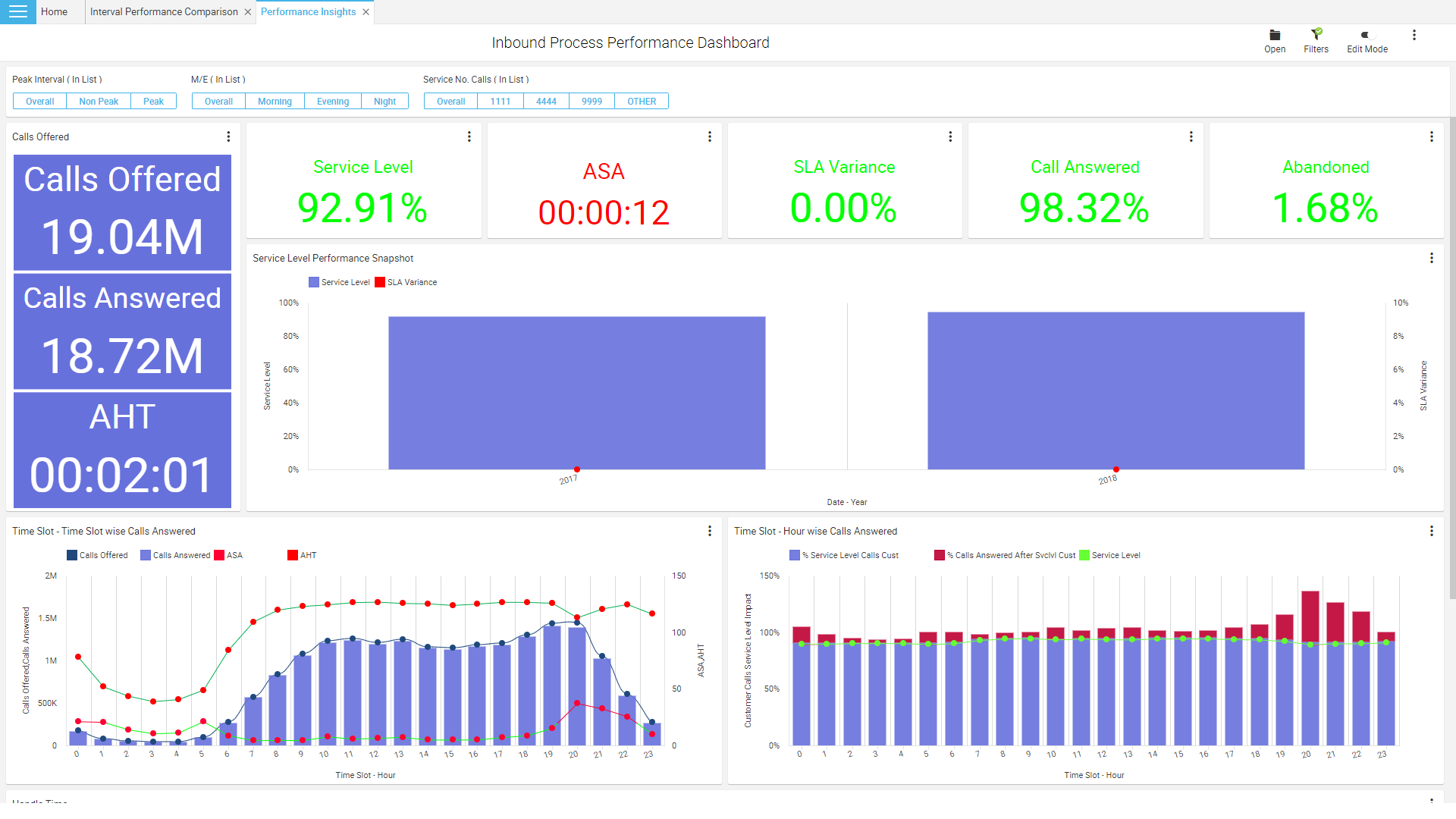
Interval Performance Comparison
This dashboard helps in comparing various KPIs based on different time intervals. For instance, you can easily compare actual calls offered vs forecasted calls offered to calls answered based on required time intervals. You can assess if you can meet the answer level against the service level. If you are behind the target, you can analyse, for which time interval the service level was low, is it due to unavailability of staff, or is it due to other causative factors and based on such insights you can improvise your decisioning. The threshold for contractual KPI can easily get configured in Intellicus to interact and form decisions accordingly.
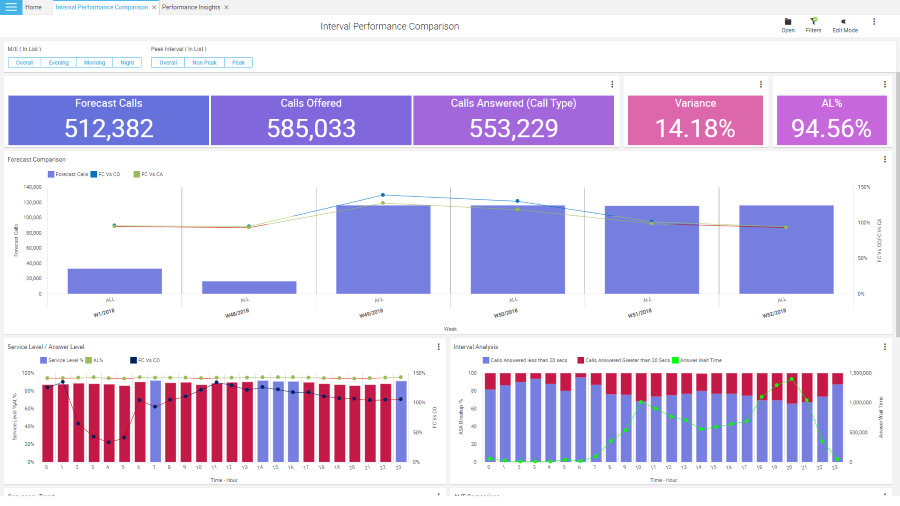
Historical Call Trend Comparison and SLA Prediction
This is achieved through a machine learning algorithm where the tool understands the past call volume pattern and builds a predictive model which also includes external factors and seasonality. Such dashboards give a comparison and analysis of the predicted values for different KPIs.
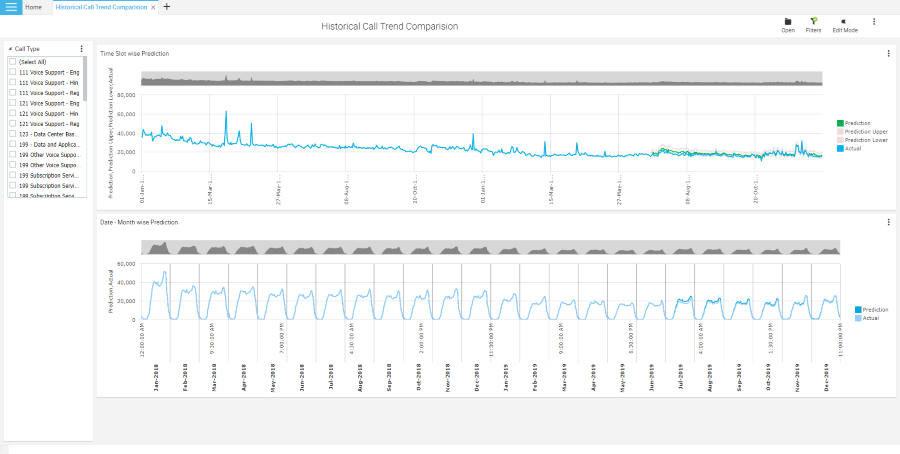
With the help of machine learning, you can assess what could be the probable call volume and trends based on the historical pattern, KPIs impacting the calls answering such as headcount, Average Speed to Answer (ASA), AHT etc. thus enable business owners to make informed futuristic decisions.
SLA prediction report predicts the probability of achieving service level. In the SLA prediction report, you can perform what-if analysis on KPIs which impact the defined threshold to know what changes you need to make to meet SLAs effectively.
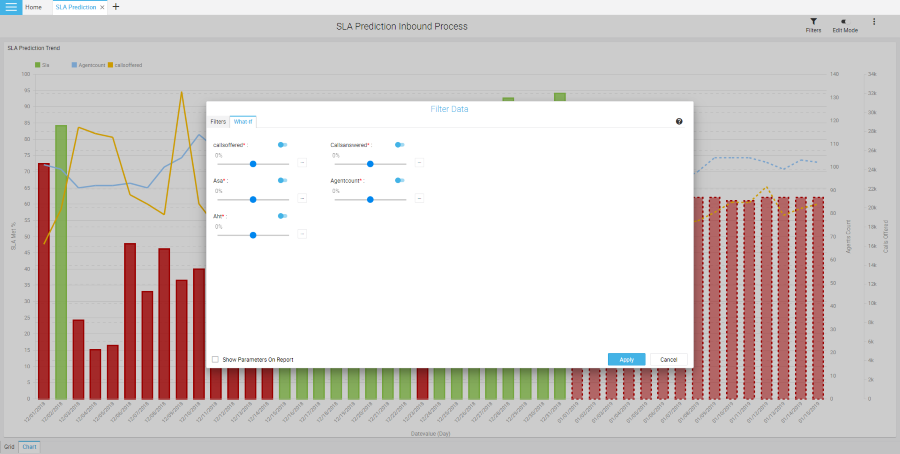
Call Details Analysis
In-depth analysis of all the calling activities on different KPIs in the portfolio. From the number of calls answered to their duration, disposition and quality, everything can be ascertained from this report. Get complete flow of actions on a given account in a single click. How many resolutions were given, what was the disposition, what was the customer response etc. can all be viewed here. It also gives immediate access to call recordings of each case, that can be leveraged by the quality assurance and training teams for agent evaluation and feedback.
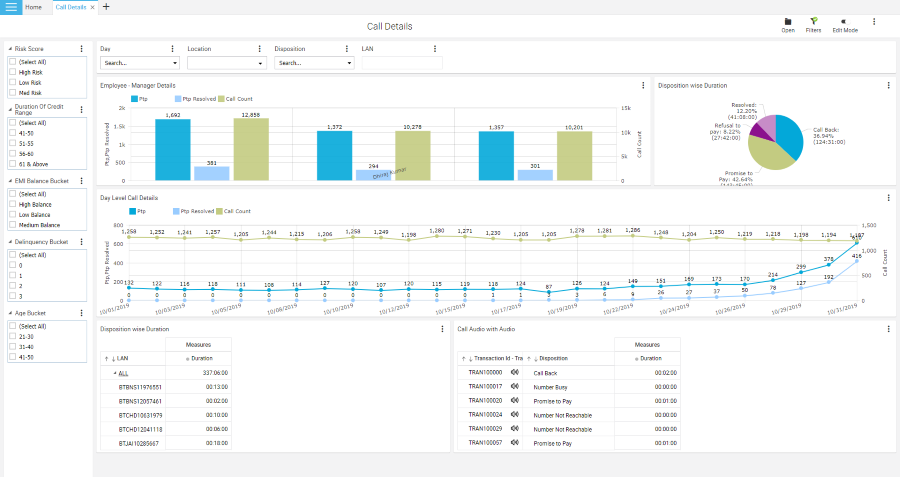
Intellicus Inbound BPO use case enables organizations to assess their performance based on multiple factors, so as they can identify bottlenecks, and effectively address them. It also helps them to analyse gaps and exploit opportunities associated with different KPIs that ultimately results in improving and maintaining healthy workflow and in acquiring better ROI.